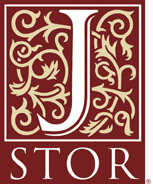
Trade and Discovery
Why were Europeans obsessed with spice?
If we are to fully understand the modern world, we need to explore exactly how Europe ended up at the centre of a global network of trade and discovery. Central to this was the search for spices that dominated medieval Europe. This unit will explore why these ingredients were so prized and how they led to Europe discovering far flung lands overseas that would then become their possessions...
1. Where was the main source of spices that Europeans wanted?
2. Why did European explorers seek a direct sea route to Asia?
3. Who was Vasco da Gama?
4. Identify one cause of European exploration.
5. Identify one effect of Portugal’s explorations along the coast of Africa.
Click the map icon on the right:
- access the powerpoint, slide 2 + complete the map of sea and spice routes that existed in Europe + Asia 1000-1500 by printing out the map available on the left
- access slide 4, choose the three spices with the most useful medicinal properties - explain your choices...why are these most important?
Read the article on the left and answer the following questions:
- Why were spices so popular in Europe in the medieval era 1000-1500?
- Which of these reasons is the most convincing?
- Why is it the most convincing?
- How did spices come to influence the modern world after 1500?
- Why did spices become less important later?
- What was their main role in shaping world history?
rubric
Spice up your Life Poster project
worksheet
Using your research homework tasks, your job is to create an advert for spices of your choice from the 16thC Europe spice trade detailing:
- What spices are you advertising for sale?
- What they can do and why people would want them?
- Where they are from in the world?
- What are these places like?
- Why they are exotic and desirable?
- How they have been harvested and transported?
- Why will they spice up your life?
You need to use text, both written details and eye-catching titles
You will also need visuals such as maps, drawings, paintings (but no photos…)
You will need to use multiple sources for your research such as the digital text at the top of the page and below...
How were Europeans able to explore the world?
Access the Powerpoint on the left by clicking on the picture of the ship
Read the Powerpoint through, stopping at the Time to Think sections 1, 2, 3, 4
On a separate piece of paper, copy the title above and then write down your answers to the questions in full sentences.
Once you have finished the Time to Think sections, read the last section on Christopher Columbus and start planning how you would write about his journey into the unknown if you were a newspaper journalist at the time....
Use your research from this powerpoint, and from the digital textbook at the top of the this page using pgs 86 + 87 in the Navigating the World infographic, create six flashcards about six inventions and ideas
These inventions and ideas flashcards need to include - what they did; how they helped exploration; what their extra special exploring power was.
These flashcards then need to be placed in three causal pyramids to help explain:
- which was the most important invention of the time?
- which proved to be the most important invention over the next few centuries?
- which is the most important invention now in the 21st Century?
What does all this tell us about our lives, and how we use technology, nowadays compared to the 15thC
How should this exploration be viewed now in the 21st century?
Use the two video clips below to explain:
- Who was Christopher Columbus?
- Why has he been remembered in a positive way?
- Why has he increasingly been seen in a different way?
Use the two video clips below to explain:
- What is Columbus Day?
- Why is it increasingly seen in a negative way?
- What has it been replaced with and why?

.png)



